1997 Corvette – The Ultimate Guide
For Corvette enthusiasts the world over, March 7, 1997, was a date that would be long remembered. After the 13-year production run of the C4, Chevrolet had declared this date as the day that the first all-new Corvette would be made available for sale to the public. Given the massive amount of fanfare that surrounded the arrival of the C5 Corvette, it was little wonder that there was such an overwhelming clamor for this amazing new variant of the legendary sports car.
The arrival of the C5 had been announced some time earlier and there had certainly been plenty of information made available to consumers and enthusiasts alike long before its actual arrival. The new Corvette was celebrated as “bringing a new level of sophistication to the franchise.” Further, it was abundantly clear that this new Corvette was truly going to be unlike anything that had ever come before it. While these types of catch-phrases were synonymous with the introduction of any new car – especially a sports car – there was a great deal of truth behind them, as would soon be discovered by the world over.”
To begin with, the C5 Corvette had a completely new look that was at once elegant, seductive, and a testament to the long lineage of sports cars that proceeded it. As was stated by Interior Designer Jon Albert, “You won’t find a car in the Corvette’s price range that provides the same level of quality, power, ride, handling, and refinement.” As Albert explained further “We designed the (C5) with a synchronous mindset. We focused on individual goals, such as improved performance, reduced mass, and increased reliability, with the overall framework of the whole car. We evaluated and balanced each charge so as to optimize the entire car.”
Autoweek “Best in Show” at the 1997 NAIAS, American Women Motorscene “Most Likely to be Immortalized”, Motorweek “Driver’s Choice Award” for Best High-Performance Car Car, Csaba Csere claims “If, as they say, God is in the details, then this is the first holy Corvette.”
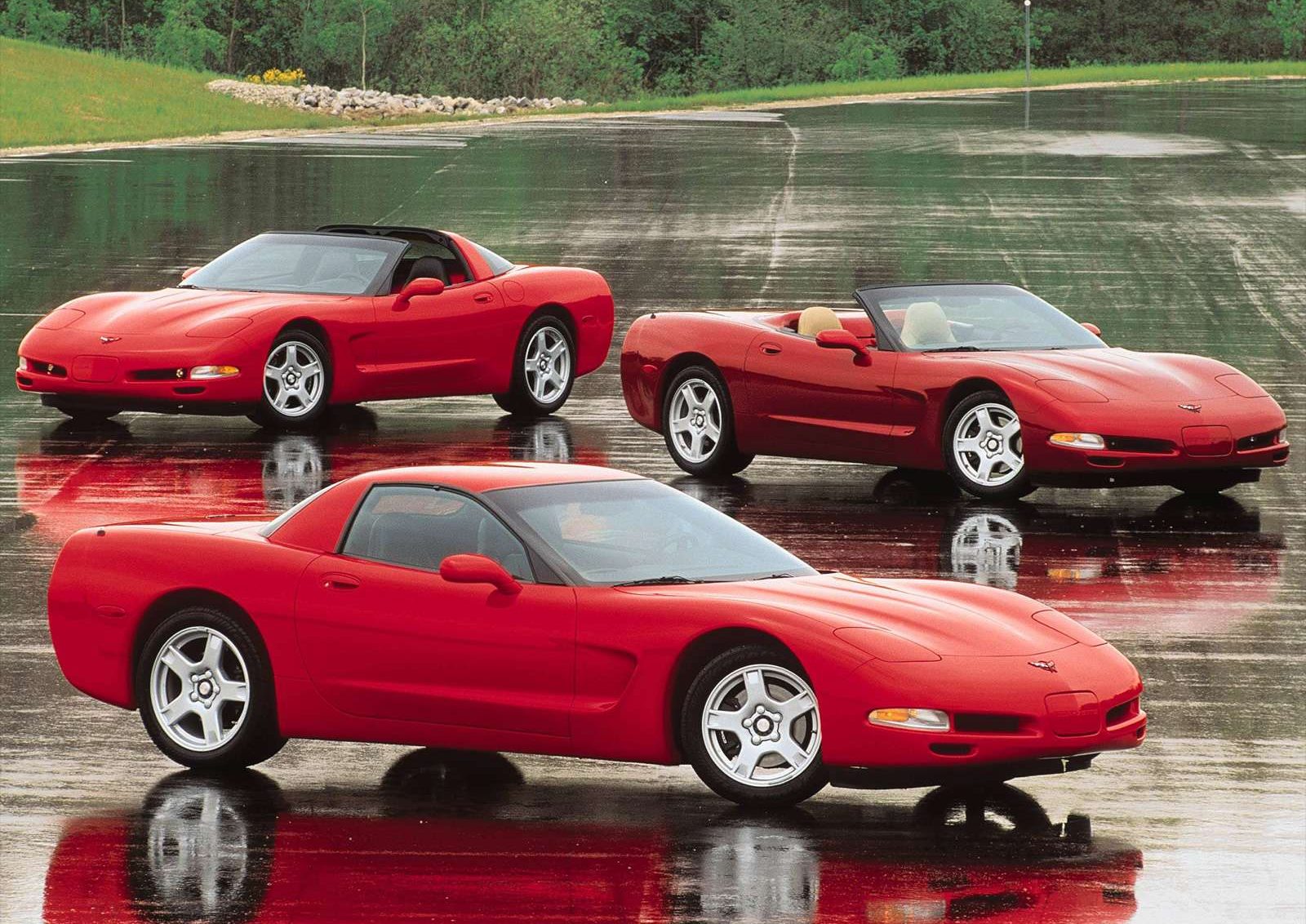
The C5 was longer and wider than its predecessor, but the relocation of the wheels to the corners of the car also aided in giving the C5 Corvette a very modern appearance. The wheelbase had been increased from 96.2 inches to 104.5 inches, the overall length increased from 178.5 inches to 179.6 inches, the width increased from 70.7 inches to 73.6 inches, the height increased from 46.3 inches to 47.8 inches, and the track width had been extended 4.4 inches in the front and 2.9 inches at the rear. These increases produced the aforementioned end result of placing the car’s wheels close to the corner of the Corvette’s chassis, which not only aided in the car’s contemporary appearance, but also produced enhanced stability and gave the car a roomier interior.
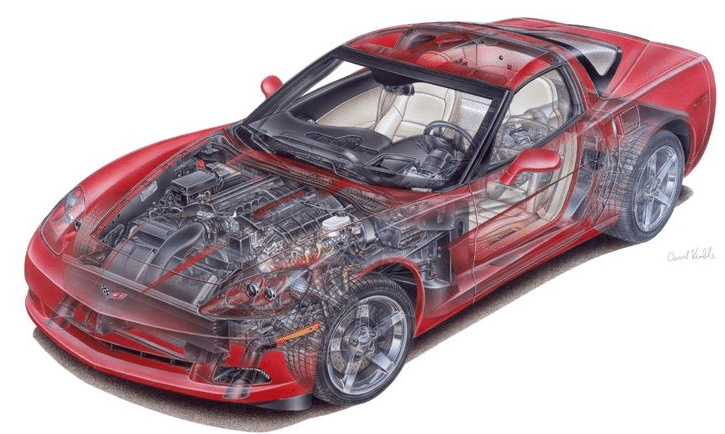
The body of the car had been completely re-designed to be more aerodynamic that any of its older counterparts. Even so, while the body styling was more swept back and the front hood and cowl were lowered to provide an additional 18 feet of forward visibility, the car was still unmistakably Corvette. Exemplifying the Corvette tradition started by Harley Earl 44 years earlier, the new Corvette’s entire body was still formed from a fiberglass-type material (specifically a flexible, sheet-molded composite compound) that, while more technically advanced than the materials used to craft the exterior of its C1 predecessor, still gave recognition to Corvette’s earliest days. Also paying homage to the C1 Corvette was the appearance of the signature fender “gills” that were located just behind the front wheel well to draw off engine heat. These gills are offset by a cove that runs along the length of the door, which was a feature first introduced on the 1956 Chevy Corvette.
DID YOU KNOW: Of all the innovations made during the development of the C5 Corvette, none was more significant than the development of the rear mounted transaxle. This design was considered after GM engineers observed the continued successes experienced by the Ferrari Daytona and the Porsche 944 (both of which use the same configuration). The primary goal of this design change was improved balance between the front and rear of the car. By moving the transaxle to the rear of the Corvette, GM engineers were able to achieve a 51% to 49% weight distribution, which is just about ideal for vehicle drivability and balance.
The windshield was designed to produce a steeper angle than any that came before it, adding to the swept back allure of the new Corvette’s signature design. As with all previous generations (except the C1), the headlights were hidden away, giving the front end a smooth, airfoil-like appearance. The front fascia featured a recessed grill on either side of the front license plate mounting area, and oval vents below the corner parking lights served as air ducts to help cool the front brakes. The front hood also received a re-design and, while less intriguing than the C4 clamshell, the C5’s hood still opened from the front of the car, and because of reduced size and weight, was also much easier to open than its earlier counterpart.
The rear end, while shorter than its C4 predecessor, was actually designed to sit higher which helped in the reduction of drag while simultaneously opening up more internal cargo space – doubling the available space from the earlier generation to a total of 25 cubic feet. Moreover, the effect of the redesign resulted in a coefficient of drag which was a reduction over previous generations. With a coefficient of 0.29, it was improved even over the 1996 C4 Corvette, which had a coefficient of 0.33.
Other aspects of the new backend also featured trademarks that had become synonymous with Corvette. the modestly convex rear fascia was finished with a distinctive horizontal crease beneath which four oval taillights were mounted.
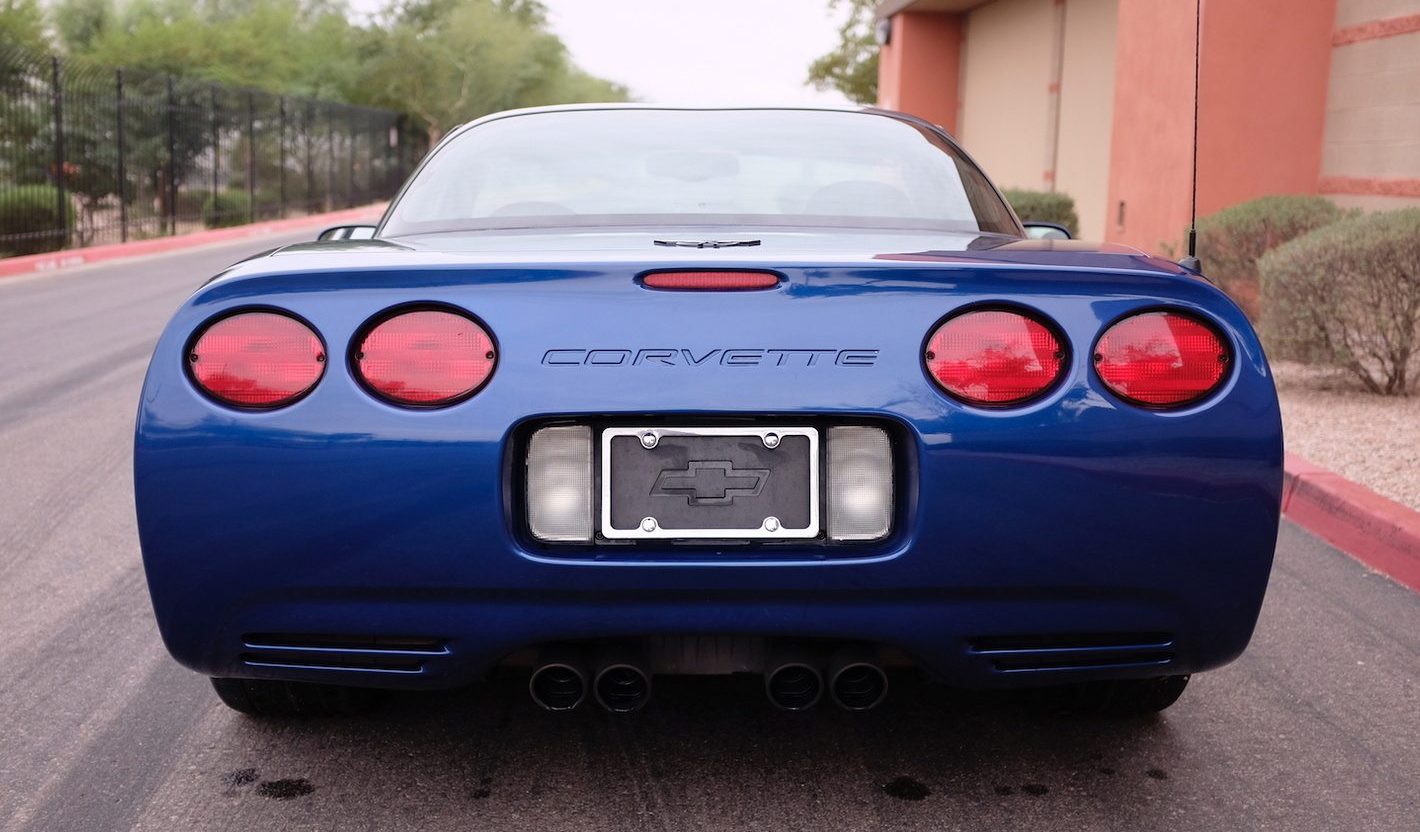
The rounded taillights, another throwback to the earliest Corvettes, gave the car an entire familiar appearance while still being a completely new design. Subtle additions to the rear fascia also included horizontal slots below the brake lights which aided in venting muffler heat. The exhaust system itself was wrapped to exit at the central point of the car’s rear end where two pairs of twin exhaust tips emerge, framed on three sides by the fascia.
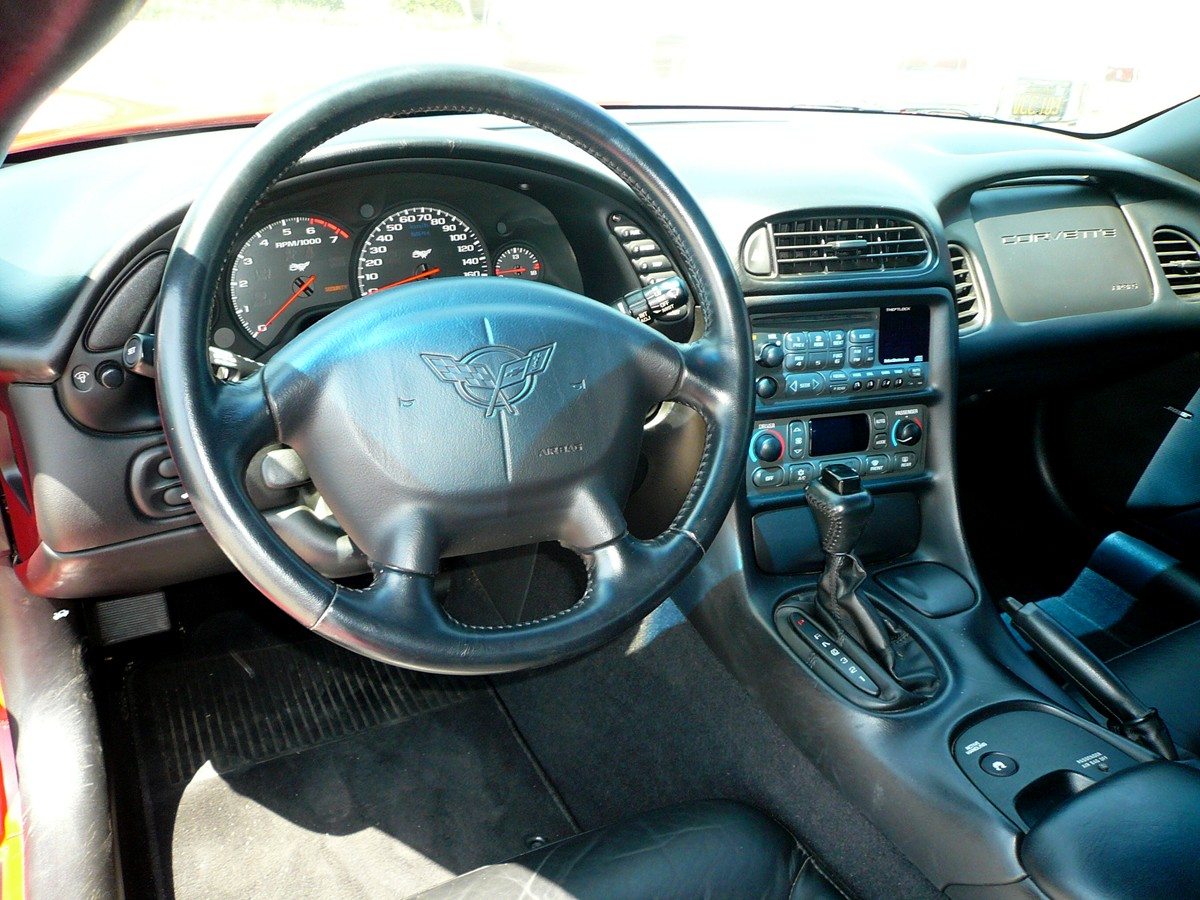
Like the exterior, the C5’s interior was an almost complete departure from all earlier-generation Corvettes. The cockpit was bigger, roomier, and more thoughtfully designed. The four-inch-tall doorsills of the C4 were eliminated, thanks to a newly designed frame. The end result of the elimination of these side rails meant that C5 owners would find ingress and egress to be no problem whatsoever.
Another improvement was the increased head and body room inside the cockpit of the C5. An extra 1.5 inches of head and shoulder room and an extra 3.4 inches of additional hip room aided in producing a “user-friendly” interior – a significant improvement to the C5 that had never been considered before.
Also like the exterior, the interior did include elements that were throwbacks to earlier generation Corvettes. The dashboard itself was the definite inspiration of the C2 Corvette and it came complete with the “dual coves” that was introduced on the 1963–1967 Corvette.
Taking it a step further, the new dashboard design included a passenger’s grab handle. The often-troublesome digital gauges that were synonymous with the C4 Corvette were converted back to conventional analog gauges. These circular gauges were marked with ultra-violet-lit “day glo” backlight paint and were set on different planes providing drivers with an almost three-dimensional effect. At night, when drivers flipped on the headlights, the “day-glo” paint was illuminated with black lights that would give the dashboard an almost “other worldly” glow that was both high tech in appearance and easy to read.
Other, more subtle changes/upgrades were included in the interior re-design. As was part of the C5’s design initiative from the beginning, the interior received treatments that would give the new car’s interior a more sophisticated, more exclusive appearance. Soft-touch pads replaced cheap plastic switchgear through the compartment. The parking brake was now activated by a proper center console control arm instead of an inconvenient lever placed to the left of the driver’s seat (as had been the case on the C4.) While the C4 Corvette was routinely criticized for its ever-present squeaks, rattles, vibrations, and its complete lack of sophistication, the C5’s new design was praised for its newfound rigidity, overall feeling of precision, and its major improvement to quality.
Beyond the new design, the car came packed with an entire array of standard features – some of which were reminiscent of the C4, while others were completely new and unique to the C5. As with before, the C5 included a removable body color (painted) roof panel (although a blue-tinted glass panel could be substituted for an extra $650.00, or both could be ordered collectively for an additional $950.00). Another significant feature to return for the C5 was the Bose audio system with an AM/FM/cassette head unit manufactured by Delco. Leather seats were also included as a standard option, as was a proximity based keyless-entry system (a feature which, though common today, was still somewhat of a big deal in 1997.)
Other optional upgrades were made available to consumers who wanted to increase the “creature-comfort” level of their new Corvettes. Some of these included dual-zone electronic air conditioning (a $365.00 upgrade), a remote 12-disc CD changer ($600.00), and a Memory package that remembered the driver’s preferred settings for the outside mirrors, the climate-control system, the power seats, and the radio settings. When fully loaded, this new Corvette had more features available to consumers than any other generation had offered before it.
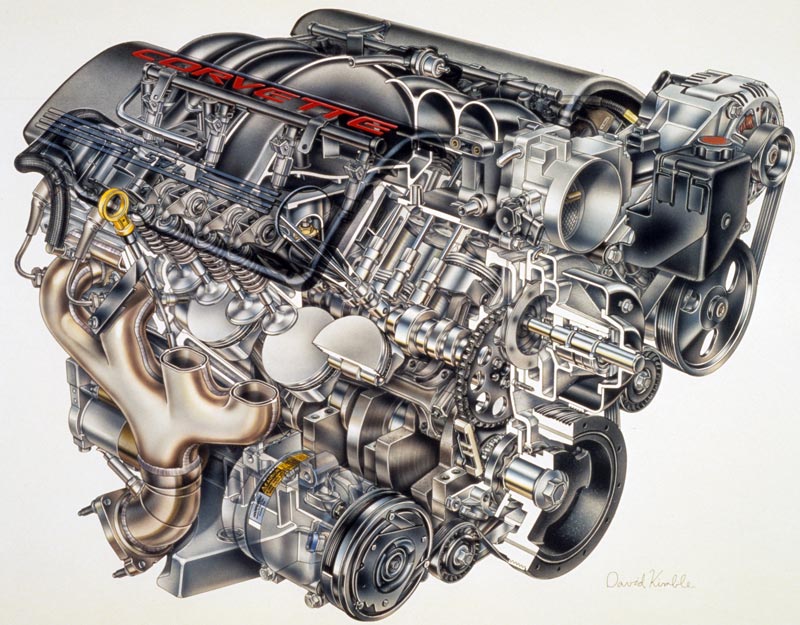
But there was more to the Corvette than just the comforts of the cockpit or its ultra-sleek exterior. It was built to perform with automobile contenders from around the world. To start, the new Corvette was fitted with a newly designed, yet historically traditional pushrod, 16-valve small-block V8. Designated as the LS1, this new engine delivered 345bhp (brake-horsepower) at 5,600rpm and 350 lb-ft of torque at 4,400rpm. While the engine displacement was the same as the C4’s LT1, this 5.7 liter engine was constructed of aluminum instead of iron and was a more aggressive, more durable design than its predecessor.
Also a carry over from its predecessor, the LS1 shared the same time-honored “440” cylinder block layout (meaning 4.40 inches from bore center to bore center) and the familiar 5.7-liter displacement label. Specified to run on premium fuel and filled with synthetic oil from the factory, the new LS1 had to be carefully fitted into the body of the Corvette. In fact, the engine clearances were so minimal, the new oil pan that was mated to the LS1 engine was scarcely 5 inches deep, yet offered increased capacity and the ability to supply lubricant during even the most extreme cornering maneuvers.
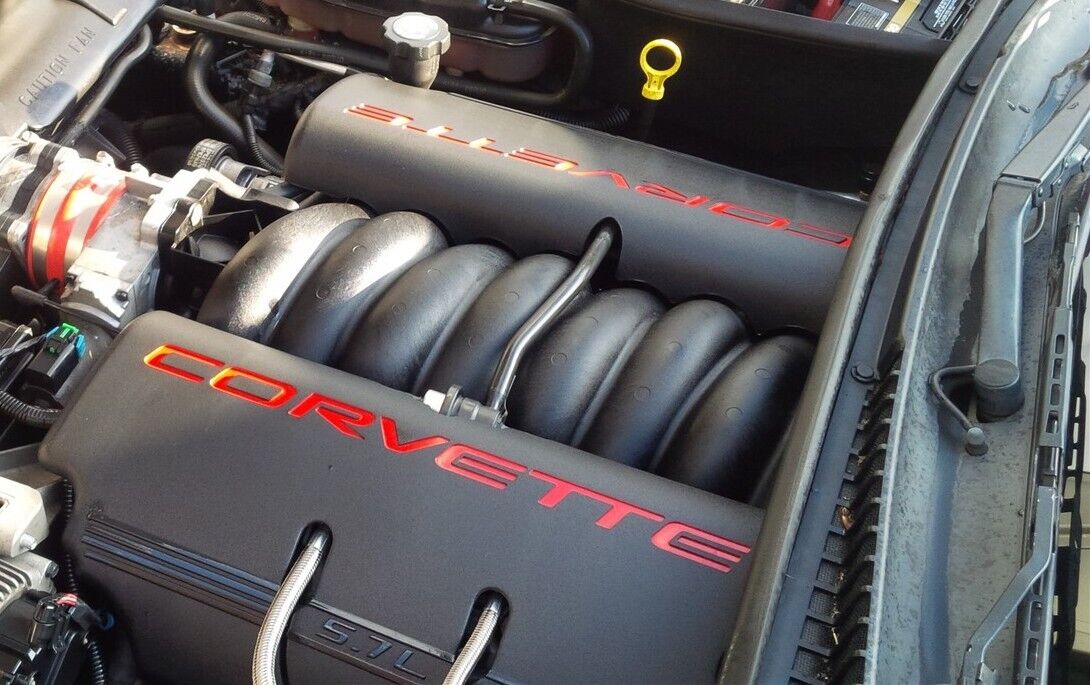
Even more impressive was the fact that this new 5.7 liter engine weighed 45 pounds less than the LT4 engine that it replaced, while still producing enough power to make it a serious contender against the former ZR1’s power plant. Mated to the new LS1 engine was a standard, four-speed automatic transmission gearbox. As with the C4 before it, a Borg-Warner six-speed manual transmission was offered for an additional $815.00 (although this transmission was a revised version of its previous generation’s counterpart.)
As with before, the new six-speed included the optional first-to-fourth Computer-Aided Gear Selection (CAGS) skip shifter. While the linkages were more complex than before, the six speed transmission’s shift effort and feel were very reminiscent of the C4.
In an effort to increase the equal distribution of weight, the C5’s transmission was relocated to the rear of the car. Located just in front of the rear axle, the transmission was mated to the LS1 engine via an aluminum tube which ran through an enclosed tunnel that formed a chassis backbone strong enough to reduce structural loads on the outboard frame rails. Relocating the transmission to the rear axle produced the desired balancing result with a 51/49 percent weight distribution. This equal distribution of weight would result in an automobile that was better-balanced and better equipped to handle the rigors of even the most aggressive drivers.
Further, this new layout was the direct result of a car that hadn’t solely been the brain-child of a single designer, but rather the response by GM to understand the considerable number of customer (and enthusiast) inputs that had driven the development of this car – including a call for friendly handling, roominess in the cockpit, and a solid, silent automobile. Another added benefit of relocating the transmission to the rear of the Corvette was the elimination of the former toe-pinching tunnels of the C4.
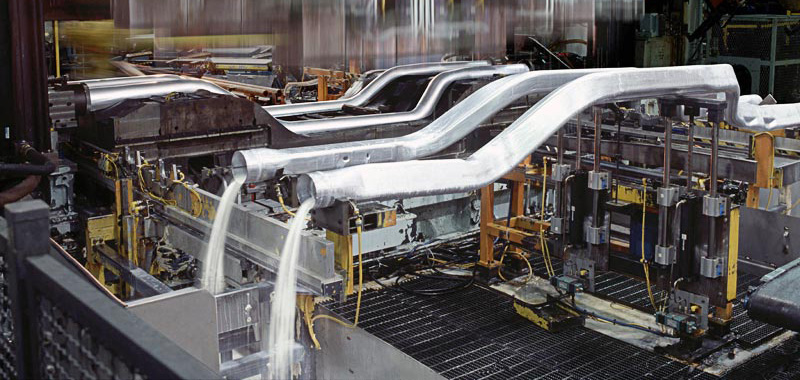
Instead of featuring a frame composed of 28 individual, welded pieces like the C4, the new model’s frame rails were composed of seamless, one-piece steel tubes that were “inflated” into shape by hydraulic pressure.
This produced a new perimeter-frame chassis that was considerably stronger than any previous generation Corvette. Tying the frame rails together was a chassis floor of composite plastic plates that sandwiched sheets of Ecuadorian balsa wood. The balsa was selected because it was lighter than synthetic fillers and was better at absorbing noise and vibration.
Placement of the fuel tank was also considered in the development of the frame, and it was decided that the fuel tank would be mounted ahead of the rear axle instead of behind it as this placement would also enhance the car’s weight balance and available cargo room.
The rear suspension now featured an arrangement that was now a true short/long-arm double-wishbone design with bushings and geometry developed for optimal ride and handling. The transverse plastic leaf springs were carried over from the C4, but, thanks to the stiffer structure, they had lower spring rates which resulted in a smoother, softer ride. There were two suspension options available for the 1997 Corvette: the first was the autocross-ready (but exceedingly jarring) Z51 suspension package. The second was the high-tech F45 Selective Real Time Damping system that allowed drivers the option to select three varying suspension modes: Tour, Sport and Performance.
Braking on the 1997 C5 featured new, vented rotors mated with aluminum calipers. While these were, at least in principal, a carryover from the C4, this new configuration was an upgrade over the previous braking system in that it featured thicker rotors. Additionally, as the ABS was now integrated with the traction control system, the brake pedal no longer needed to be pushed to signal activation of the antilock braking system.
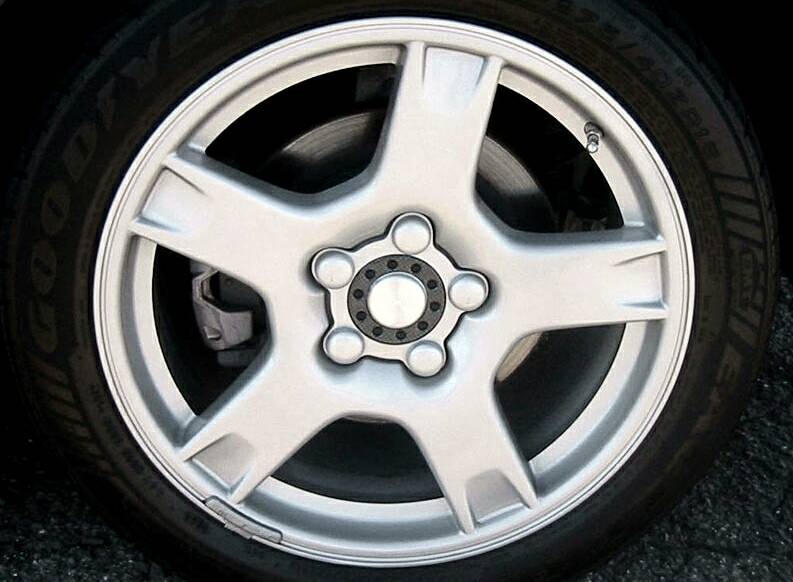
In an on-going effort to move away from the necessity of carrying a spare tire with jacking system, the 1997 Corvette was fitted with Eagle F1 GS Extended Mobility Tires. These tires were designed to run airless for 200 miles. Their introduction to the extended mobility tires convinced Chevrolet to eliminate the spare tire and jack altogether, which further aided engineers in reducing vehicle wait while also increasing cargo space. The inflation level of the tires was monitored constantly and could be called up on an instrument-panel display (thanks to the on-board tire monitoring system that has since become standard on almost every GM vehicle.) Wheel diameter was again increased to 17 inches in the front of the car but was increased an inch to 18 in the rear. The tires, which were sized 245/45ZR-17 and 245/45ZR-18 respectively, were actually slightly narrower than the 1996 model’s base tire package. This proved to be an advantage as the somewhat narrower tires actually aided in improving the directional stability to levels unsurpassed by General Motors.
Perhaps one of the 1997 Corvette’s most significant achievements is that the C5 was immediately recognized as one of the fastest Corvettes of all time and was one of the fastest cars in the world that year. When equipped with the six-speed manual transmission, it could accelerate from 0-60 mph in just 4.7 seconds, which was a half-second less than the 1996’s LT4 engine equipped C4, and just as quick as the 405 bhp equipped 1995 ZR-1 Corvette. Its top speed was documented at 172 miles per hour, which made it faster than any of the C4 coupes/convertibles and only seven miles shy of matching the ZR-1’s top-speed. Equally impressive was the skidpad numbers of 0.93 g, which was the best number ever achieved by a production Corvette, while braking from 60-0 miles-per-hour was a supercar-short 125 feet.
Needless to say, the C5 was a success from the moment the first models hit the showroom floor. The automotive press was, for the most part, very enthusiastic about the new car, favorably comparing it to such exotic counterparts as Porsche and Ferrari – and at a cost that was less than half of what its European counterparts, there were few who could criticize the Corvette for being anything less than the perfect blend of “emotion and intelligence.”
As was stated by Car and Driver’s Csaba Csere, “If, as they say, God is in the details, then this is the first holy Corvette.” It was also considered the most-civilized Corvette produced to date. The new Corvette also earned high marks for providing better handling and improved ride quality, much improved instrumentation, vastly improved interior ergonomics and improved outward visibility. While there were critics amongst those that praised the arrival of the Corvette, their voices were few. Even the most cynical reviewers could find little truly wrong with the 1997 Corvette.
Production Volumes
Surprisingly, given the demand for pre-sales of these cars, only a total of 9,752 C5 Corvettes were built in its 1997 model year. This was not a critical concern to anybody within General Motors though because future orders were increasing exponentially. Besides, the production constrained 1997 Corvette had another variable working against it – namely that the model year had started late for the C5 Corvette. Still, the Corvette was selling briskly for the first time in more than a decade.
1997 Corvette Specifications & Performance
See the complete breakdown of technical specifications for the 1997 Corvette, including engine, suspension, brakes, body dimensions, and power. Read more: 1997 Corvette Specifications.
Engine, Transmission & Performance
Although still classified as a “small block” about the only thing still in common with the original small block V8 installed in the 1955 Corvettes was the 4.40″ bore centers and the fact that both were a two valve pushrod design. The new motor was aluminum with cast-in cylinder liners. The LS1 was designed to go 100,000 miles between major servicing – try that in 1957! It also featured a “throttle by wire” design. This meant that the customary throttle cable was eliminated and pressing what was usually known as the gas pedal actually moved a sensor that was part of the engine management computer. As of 1997, only BMW had sold a car in the US with similar technology. The output of the LS1 was 345 hp – only 30 hp less than the ZR-1 as introduced in 1990. Engine RPM was limited to 6,000 RPM. The 1997 Corvette had a top speed of 172 mph anf was good for a 5.05 second sprint from 0 – 60 mph as an automatic and 4.72 seconds as a manual.
1997 Corvette Vehicle Identification Numbers (VIN)
The last six digits begin at 100001 and run through 109707. A total of 9,752 Corvettes were built in 1997. Each Vehicle Identification Number (VIN) is unique to an individual car. For all 1997 Corvettes, the Vehicle Identification Number was stamped on a plate on the inner vertical surface of the left windshield pillar visible through the windshield. VIN numbers this year include prototype and pilot cars so VIN serial numbers do not match production. Read more: 1997 Corvette VINs.
1997 Corvette Price & Options
Core Features & Factory Options
The C5 was introduced in 1997. It was an entirely new car; more so than any other Corvette generation in that all major elements – the drivetrain, the chassis and the body – had not appeared before. Something else was new: when describing the C5, road testers used the word “refined”, which was not how previous Corvettes were labeled. It’s not that the Corvette was going soft in its later years; the difference was in the state of the automotive art. For Corvette fans, the C5 represents a watershed moment in Corvette development. The C5 chassis and drivetrain layout would be essentially the same through the C6 and C7 generations or 23 model years. Consequential changes only appeared with the C8 mid-engine layout – a testimony to the soundness of the C5 chassis design. The C5 is faster (345 hp), lighter (68 lbs less than 1996), stiffer (4.5 times stiffer!) and quieter than the previous versions. The front/rear weight ratio is balanced at a near perfect 51.4/48.61. The new LS1 engine produces 345 horsepower and 350 lb-ft of torque.
Colors
Colors for the 1997 Corvette broke out like this: Arctic White 1,341 (13.75%), Sebring Silver Metallic 2,164 (22.19%), Nassau Blue Metallic 292 (2.99%), Black 2,393 (24.54%), Light Carmine Red Metalli 381 (3.91%), Torch Red 3,026 (31.03%), Fairway Green Metallic 155 (1.59%). Read more: 1997 Corvette colors
Pricing & Options
The Base Corvette Coupe with 346 cu. in. 345 hp engine and four speed automatic transmission started at $37,495. Notable performance handling package was another $350 while the fancy new real time damping control was $1695.
| CODE | DESCRIPTION | QUANTITY | RETAIL PRICE |
| 1YY07 | Base Corvette Sport Coupe | 9,752 | $37,495.00 |
| AAB | Memory Package | 6,186 | $150.00 |
| AG2 | Power Passenger Seat | 8,951 | $305.00 |
| AQ9 | Sport Seats | 6,711 | $625.00 |
| B34 | Floor Mats | 9,371 | $25.00 |
| B84 | Body Side Moldings | 4,366 | $75.00 |
| CC3 | Removable Roof Panel, Blue Tint | 7,213 | $650.00 |
| C2L | Dual Removable Roof Panels | 416 | $950.00 |
| CJ2 | Electronic Dual Zone Air Conditioning | 7,999 | $365.00 |
| D42 | Luggage Shade and Parcel Net | 8,315 | $50.00 |
| F45 | Selective Real Time Damping, electronic | 3,094 | $1,695.00 |
| G92 | Performance Axle Ratio (automatic) | 2,739 | $100.00 |
| MN6 | 6-Speed Manual Transmission | 2,809 | $815.00 |
| NG1 | Massachusetts/New York Emissions | 677 | $170.00 |
| T96 | Fog Lamps | 8,829 | $69.00 |
| UN0 | Delco Stereo System with CD | 6,282 | $100.00 |
| U1S | Remote Compact 12-Disc Changer | 4,496 | $600.00 |
| V49 | Front License Plate Frame | 2,258 | $15.00 |
| YF5 | California Emissions | 885 | $170.00 |
| Z51 | Performance Handling Package | 1,077 | $350.00 |
Read more: 1997 Corvette pricing and factory options.
1997 Corvette Gallery
Using 1500 less parts than the C4, production was easier and less parts to rattle. The new shape was wind tunnel tested until it was down to 0.29 coefficient of drag, allowing for better performance, mileage and top speed. See full 1997 C4 Corvette Image Gallery
1997 Corvette Videos
See more 1997 Corvette Videos


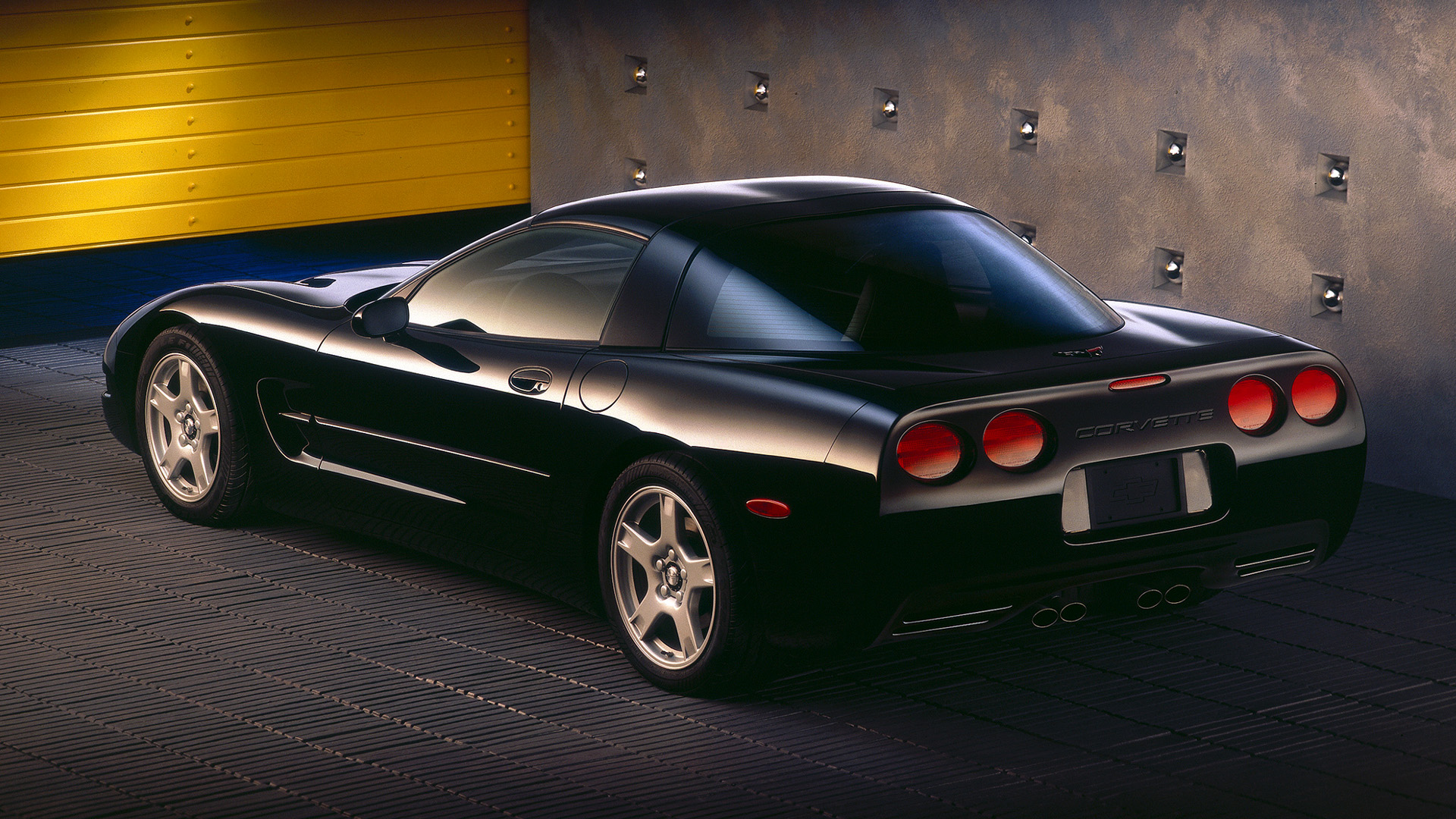
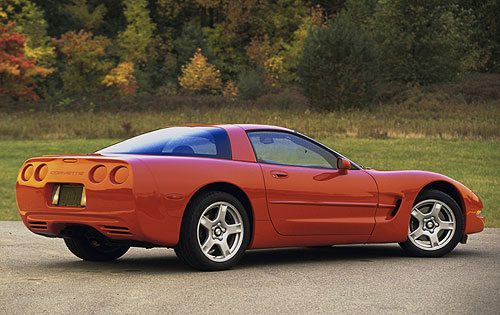
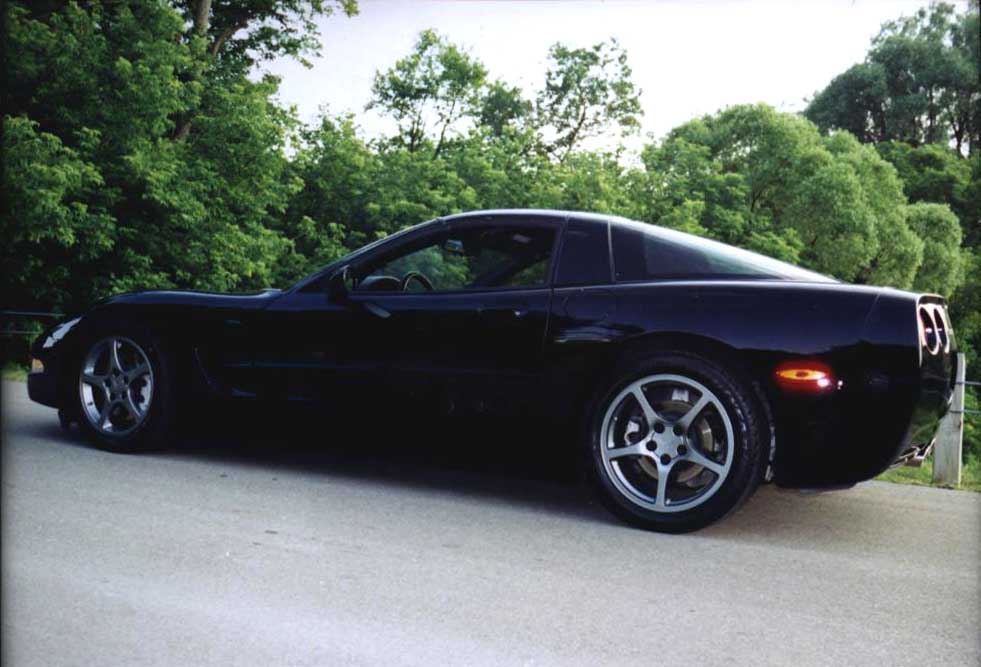
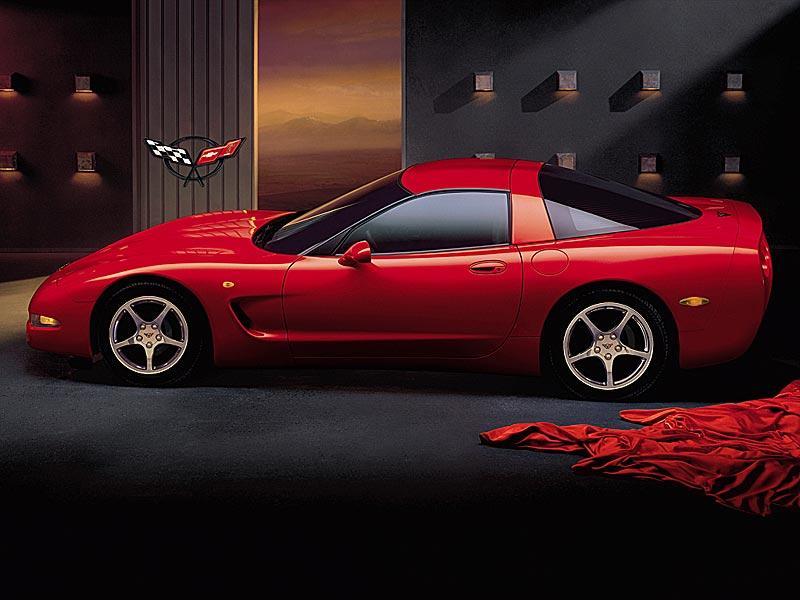
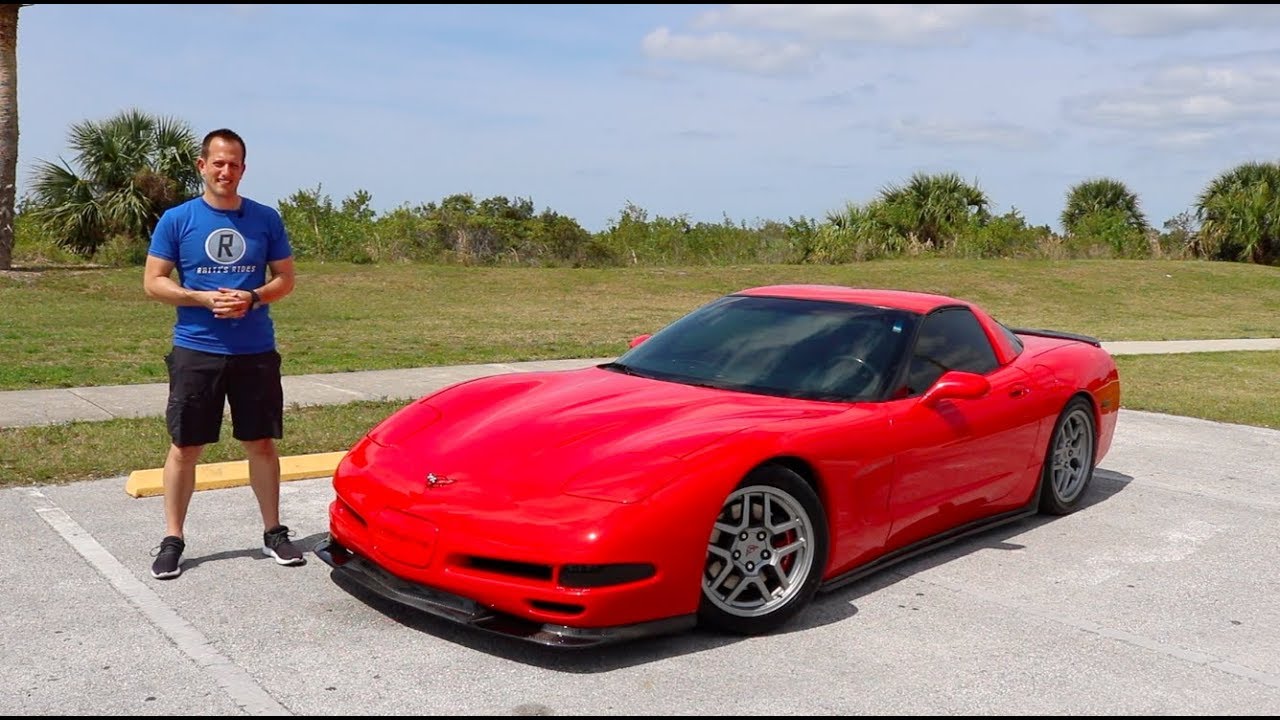
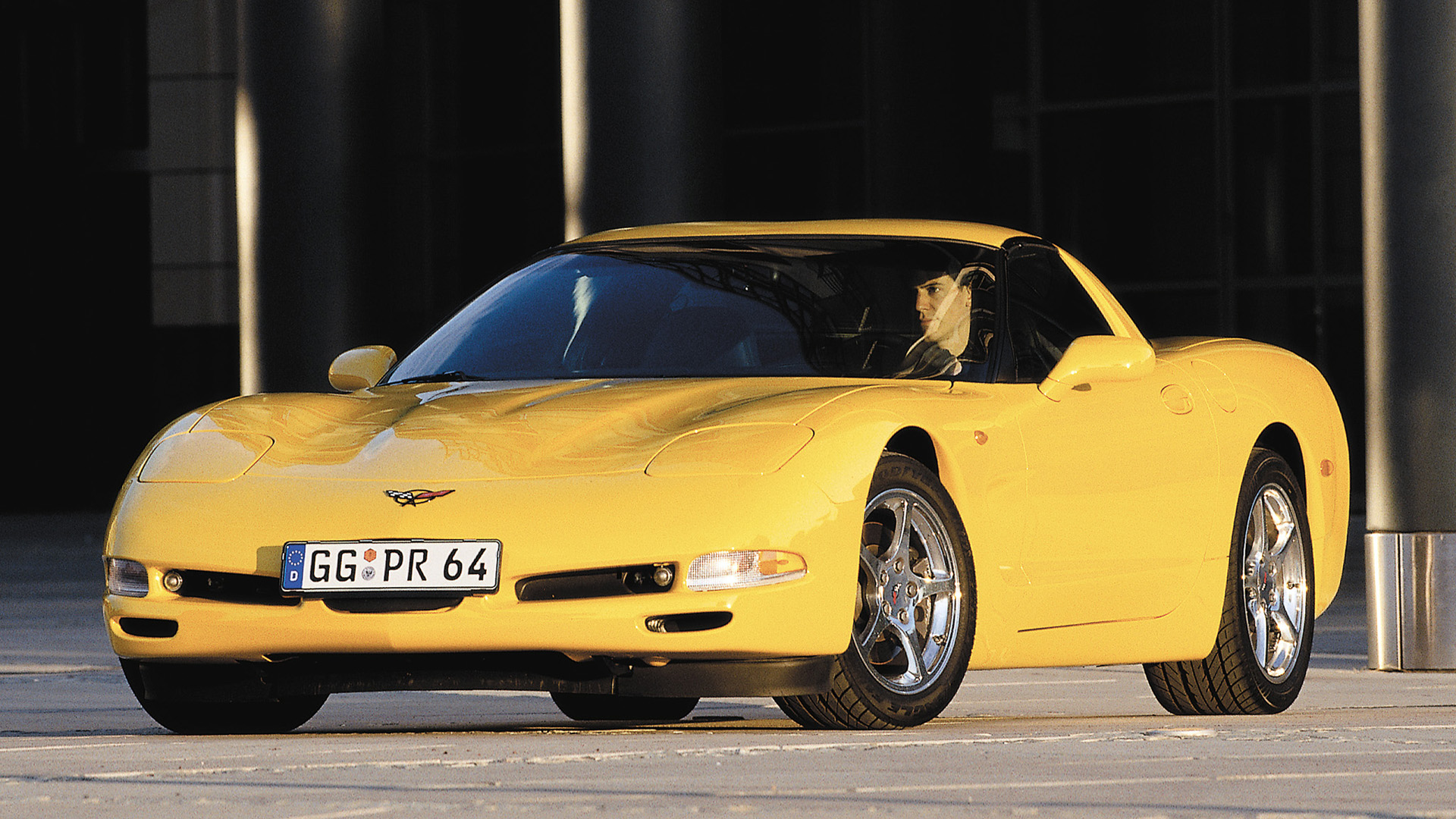
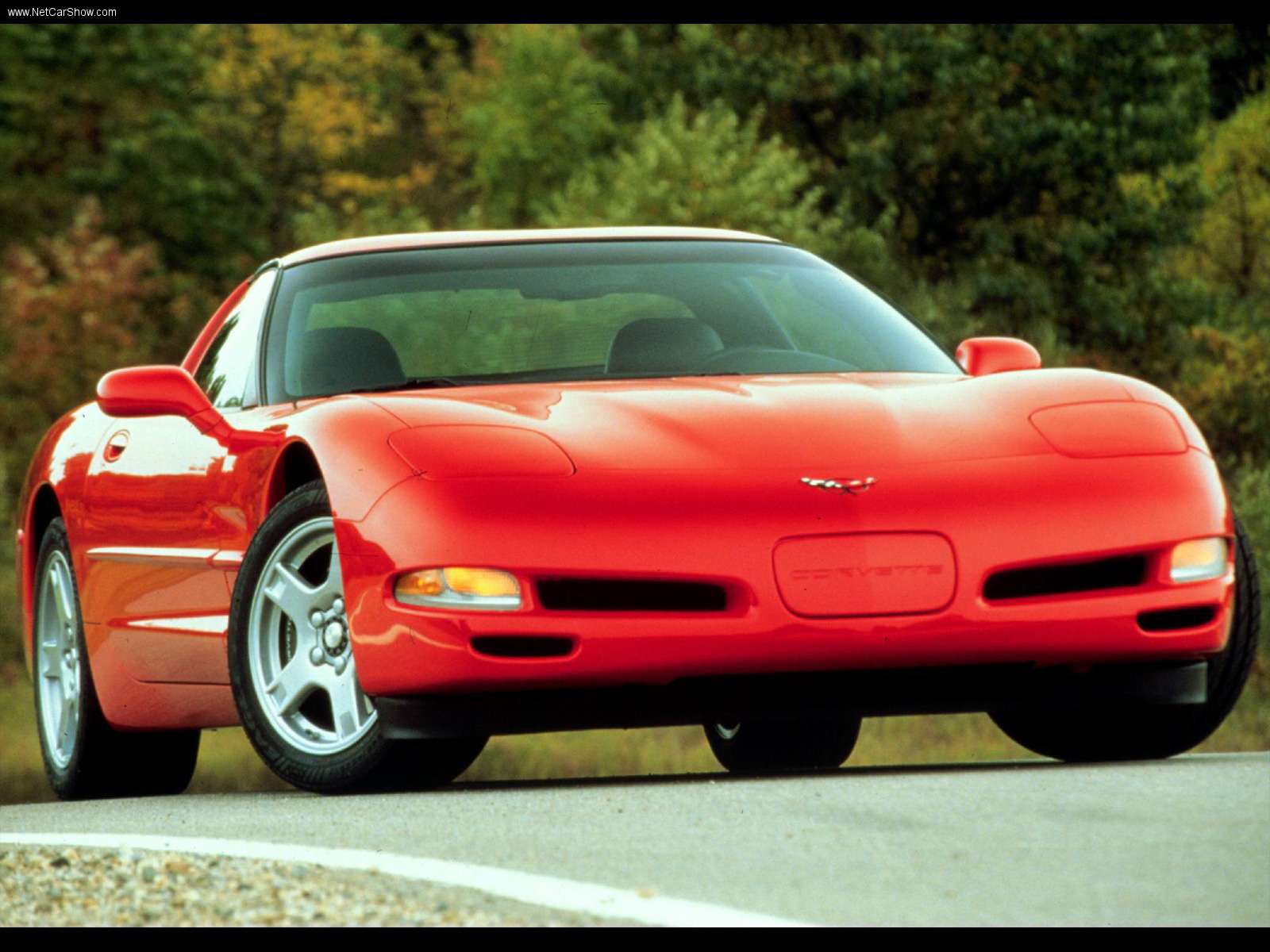
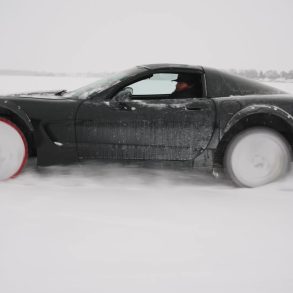
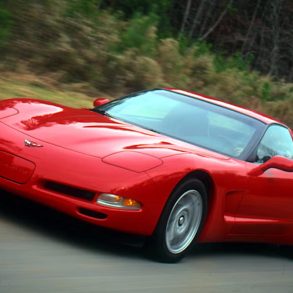

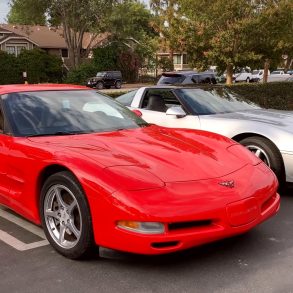
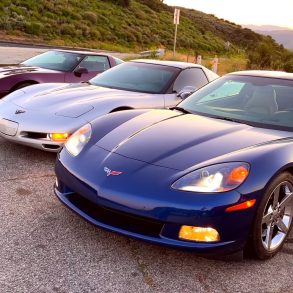
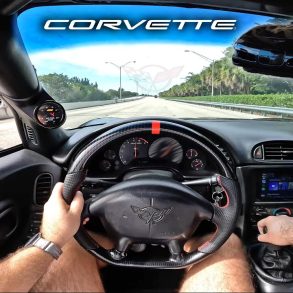
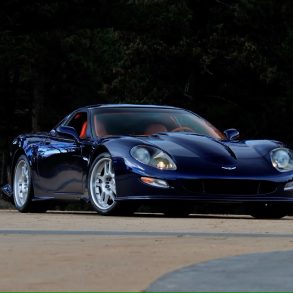


this page was very helpful